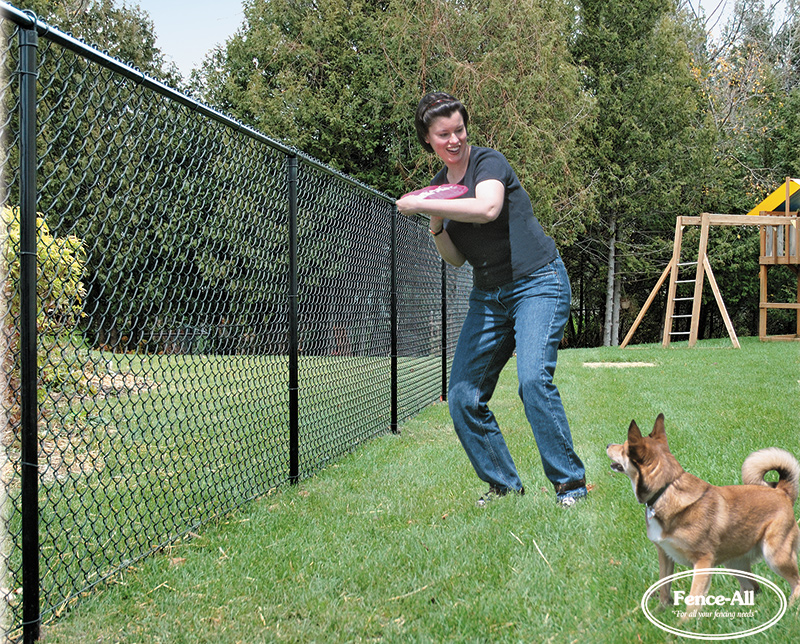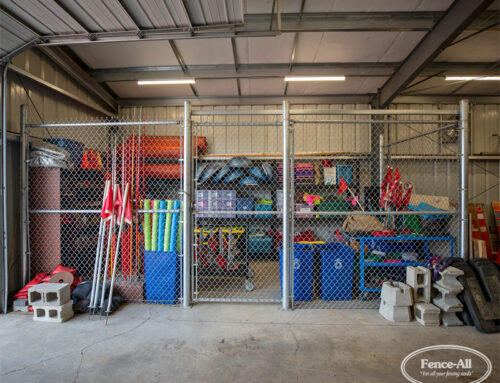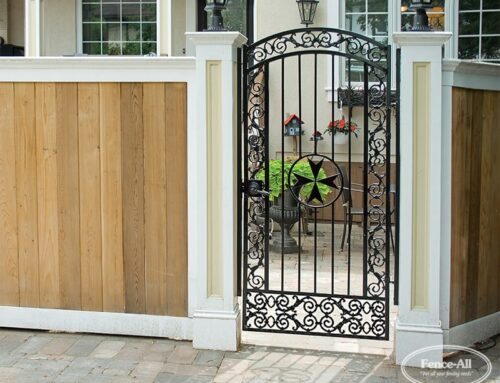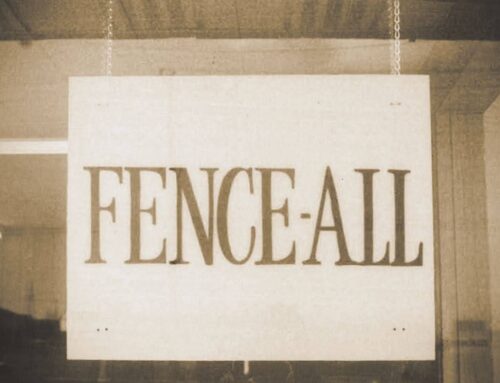We did a blog last week about fencing terminology. Chain link fences are a little different so we’re treating them separately. Here’s a quick primer on the elements that make up a chain link fence.
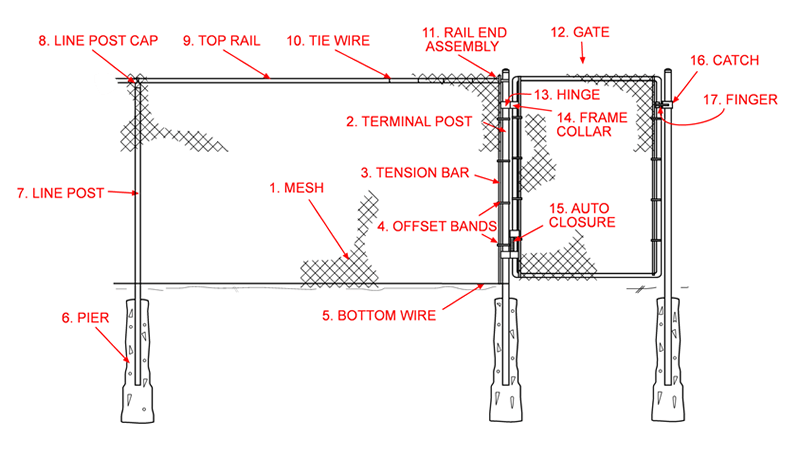
1. Mesh
Residential chain link mesh comes in 2″ diamonds. The wire is covered in vinyl so that the final thickness is 9 gauge.
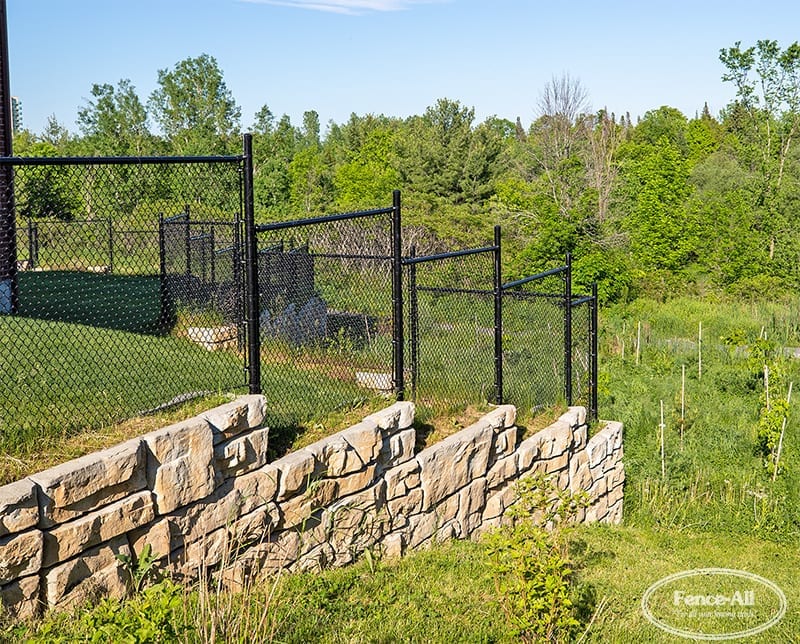
Terminal posts are required when there are large changes in grade.
2. Terminal Post
Terminal posts are required for gates, at the end of runs, and in the middle of runs if there are large changes in the grade of a property. They’re thicker than line posts (usually 1-7/8″ for residential). The fence attaches to them with a tension bar and offset bands.
3. Tension Bar
A 3/4″ tension bar threads through the mesh so it can be attached with uniform tension to a terminal post.
4. Offset Bands
Offset bands connect the tension bar to the terminal post. At each terminal post there are 1 less than the height of the fence in feet.
5. Bottom Wire
9 gauge vinyl covered bottom wire runs the length of the fence to keep the mesh in line.
6. Pier
The pier is the cement footing of a post that’s been set in the ground. Fence-All piers go three feet down, and the bottom is belled to prevent heaving. It’s very common to deal with pier removal when a new fence is replacing an old one. It can be challenging, because you never know how large the old pier is until it is dug out.
7. Line Post
Line posts are installed at a maximum of 8′ apart. They’re smaller than terminal posts (typically 1-1/2″ for a residential fence). The fence is attached to them with tie wires.
8. Line Post Cap
A line post cap is a cap with an opening that the top rail can run through.
9. Top Rail
Top rails for residential fences are typically 1-1/4″ in diameter.
10. Tie Wire
The mesh is attached to the frame along the top rail and line posts with vinyl covered tie wires.
11. Rail End Assembly
The rail end assembly is used to attach the top rail to a terminal post.
12. Gate
The gate provides egress from and access to the yard or area surrounded by the fence installation. At Fence-All, gates cost twice the amount per foot as the same fence style. It’s a convenient rule of thumb for quick budgeting.
13. Hinge
Just like on a door, hinges allow the gate to swing open and closed in a convenient manner.
14. Frame Collar
The frame collar attaches the hinge to the gate frame.
15. Auto Closure
An auto closure ensures that a gate will close by itself once opened. It is required to make a gate pool legal.
16. Catch
The part of a gate hardware system that attaches to the post. It “catches” the gate finger when the gate is closed and releases it when the gate is opened.
17. Finger
The Finger is the part of the gate hardware that attaches to the gate. The name comes from its shape. It attaches securely to the catch on the post when the gate is closed.
More questions?
If you have more questions about chain link fences we’re happy to answer them. Call 613-736-1122 or hit the chat button on the right during business hours.

